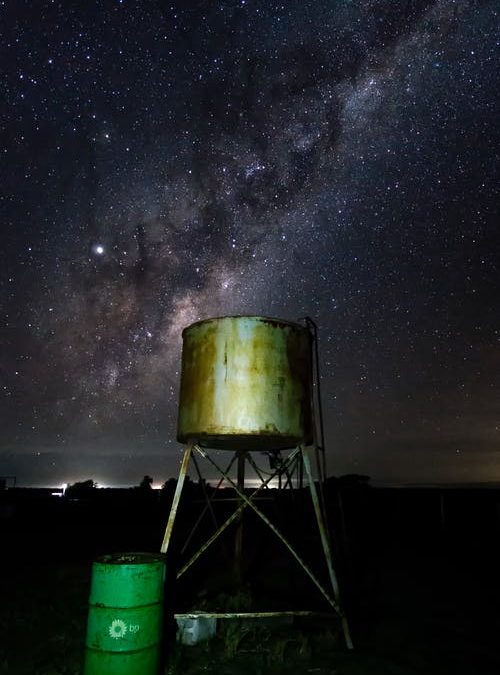Image via Pexels
Experiencing a fuel or oil spill can be very worrying due to the numerous environmental and personal safety hazards associated with this event. This is why, if such a spillage occurs at your facility, your organization or anywhere else in which these substances are being stored or transported, you need to be able to respond in the right way. But who should you call first if you have an oil or fuel spill?
The First Call: Who Do You Contact First?
Who you call depends on where the oil or fuel spill occurs.
If you are working on the coast or in a facility out on the ocean water and an oil or fuel spillage occurs at sea, you need to get in touch with the U.S. Coast Guard immediately.
If you are working on land and an oil or fuel spillage occurs, you need to call the fire department.
You will also need to notify the National Response Center. Even if you are not responsible for the spillage, you will still need to report it so the correct actions can be taken.
Don’t forget that individual states may also have their own reporting requirements. The National Response Center and other authorities will be able to point you in the right direction.
Each of these actions represents the first steps on your journey to dealing with the spill. However, it is likely that your responsibilities extend beyond this – particularly if the spillage happened on your commercial premises. As fuel and oil can be washed away into the water table through stormwater, creating a serious environmental hazard, it is up to you to help the authorities make the situation safe.
What Should You Do Next?
- Assess the situation
If you are a business owner or manager, you should have guidelines and regulations in place to help you deal with hazardous materials. You and your team should be able to make a swift and reasonably accurate assessment of the situation, and determine the risk involved.
First and foremost, make sure to assess the safety solutions for all human personnel on the site. Next, consider how you and your team can begin to contain the spillage.
- Begin evacuation
Everyone who does not need to be on-site to deal with the spillage should be evacuated immediately. Make sure evacuations are carried out in a safe and orderly manner. Then check to ensure only the required personnel are still on-site – this includes any personnel who have the proper training required to handle a spillage or to organize the clean-up operation.
- Make sure everyone has the right personal protective equipment
Oil and fuel can be hazardous substances. You need to make sure you and any other personnel that stay on-site to deal with the spillage are properly equipped.
Equipment can include:
- Safety boots
- Goggles and mask
- Respirator or other breathing apparatus
- Hazmat suit
- Gloves
Make sure everyone who remains on-site has undergone training into how to use this personal protective equipment (PPE) and understands its importance.
- Begin the process of containment
Oil, fuel and other hazardous chemicals can be seriously dangerous to the environment if they are allowed to spread unchecked. After assessing the situation, you should be able to safely execute a plan of containment.
If the leak or spillage is coming from a pipe or a similar source, you need to shut off the flow quickly. If your facility is handling the flow of fuel or oil through lines, you should have a means of controlling this flow.
If the leak or spillage is coming from damaged barrels or other containers, quickly assess how many barrels are broken and leaking so you can understand the scale of the problem.
Deploy spill containment berms to actively contain the spread of the spilled fuel and oil. If you can isolate the source of the spillage, a spill containment berm will be ideal to prevent any additional release of material into the environment.
- Begin the clean-up phase
By now, the authorities should have reached your location and – along with the efforts of you and your team – brought the initial problem under control.
Now, it is time to begin the clean-up operation. Use only professional-grade clean-up equipment and follow a tried-and-tested plan to make sure clean-up is handled in the right way. You may need to report the result of the clean-up operation to the local and national authorities, who may need to visit your site to carry out an inspection.
- Review your response
You and your team need to take the time to learn any lessons you can from the experience of dealing with the spillage. Review how you responded and consider updating your plan of action to improve your response in the future.
Of course, the best plan is the one that eliminates the danger of a spillage altogether. Consider how you and your team handle hazardous materials. Then think about how you can improve this to make your operations safer for everyone involved. Put measures such as secondary containment in place to increase safety even further.
- Make sure your equipment is up to scratch
Any equipment that was used heavily or was damaged during the spill needs to be replaced. Check through all of your PPE and spill containment berms and make sure they are still fit for purpose. Consider investing in more equipment if you feel it is no longer sufficient for your needs.
Conduct regular checks and assessments to make sure your organization is well equipped to handle a potential spillage.
Looking to the Future
Just like with any event that takes place at your facility, you need to learn from the positives and negatives. Then make sure you come back stronger. Environmental safety is an ongoing process of development, and your business needs to do its part to stay safe, protected and responsible moving forwards.
